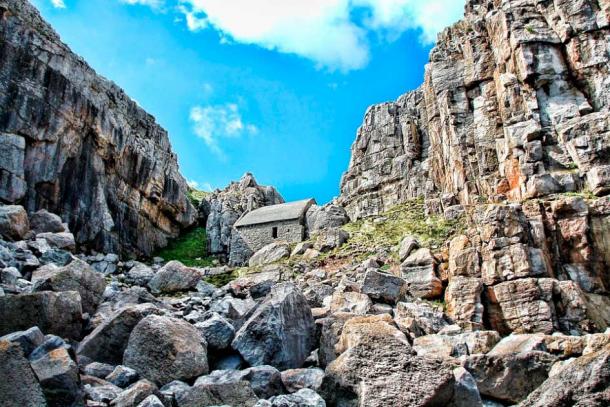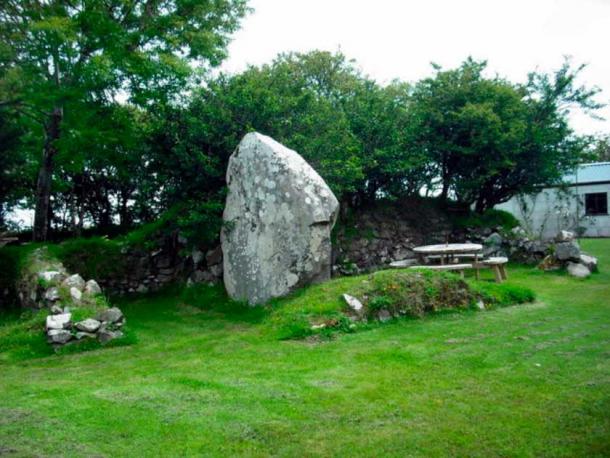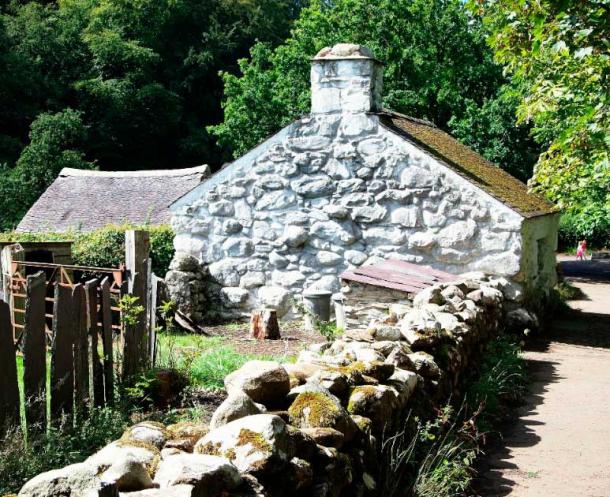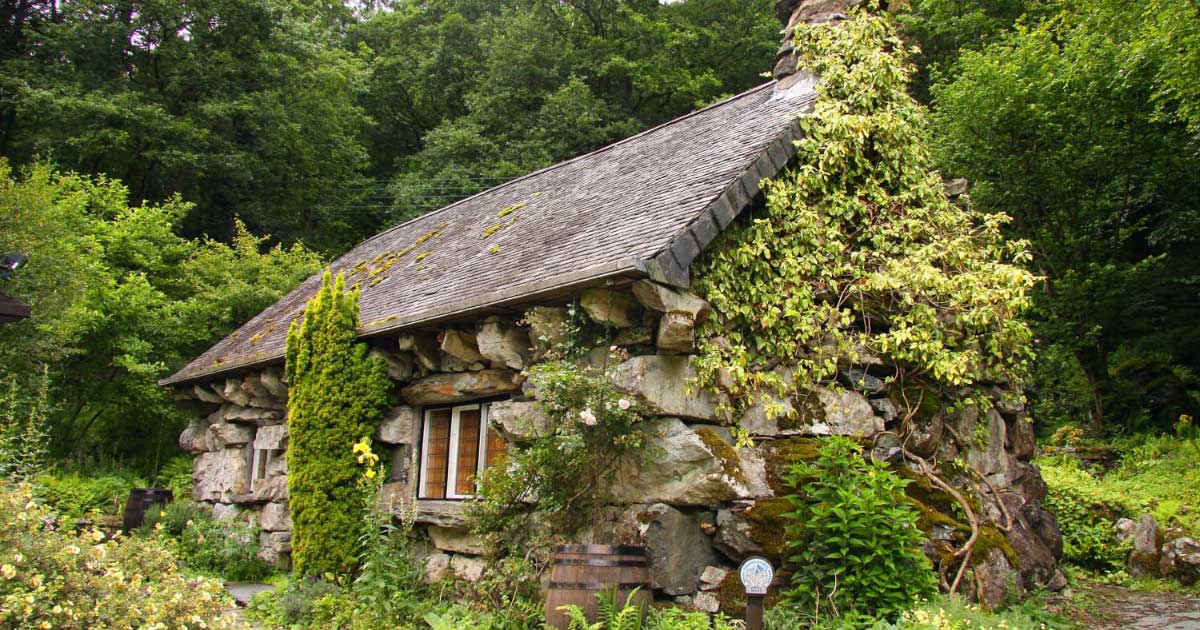The One Night House: Squatters from Welsh Folklore
The story of the one night house, or tŷ unnos, is something heard from a friend or relative. The Welsh custom is a quaint tradition with interesting roots. Oral history is keeping the concept alive, although it’s now more legend than reality.
What exactly is a one night house? It’s a dwelling built by squatters in one night. Work would start at dusk, and come daybreak, the home would be standing in what had previously been a vacant spot. There are parallels in the folklore of other countries that might explain where it came from and how it worked.
A Story Passed On Through the Generations
Folklore is any custom preserved among the people by retellings or reenactments, and the one night house certainly fits that description. There’s very little written or recorded about tai unnos, the plural of tŷ unnos. However, thanks to stories told by parents and grandparents to the next generation, some information about the custom survives.
The last one night houses were thought to have been built by squatters more than 100 years ago. The evidence that remains about the Welsh tradition suggests that it was first practiced in the 17th century and went on for the next two hundred years.
During that period, many of the small holdings on larger estates were thought to have come from that tradition. As well as inheriting the tŷ unnos, families took on the tradition. The task was handed down to the next generation, who would go out as the light faded to build their own one night house.
Since the building of one night houses no longer occurs, the idea is fading. Lovers of folklore and history are hoping to keep the tale alive. For the memory of the custom to survive among its people, it needs to be researched, discussed, and told as part of stories.
- Caernarfon Castle: The Imposing Welsh Constantinople
- Harlech Castle: Wales’ Most Formidable Fortress

Poor folk in Wales and elsewhere have squatted on land to claim it for centuries. In Welsh folklore, if you could build a one night house without being detecting – it was yours! (Public Domain)
A British Tradition
Although the custom is mostly talked about as a Welsh one, there are other tales of one night houses from the land bordering Wales and from other parts of the British Isles. It was a time of population expansion in those parts, and many families were in need of a dwelling.
There were more conventional routes to take to have a home, although many families shared, with the older and younger generations all under one roof. It’s thought that poverty was a driving factor for someone to build a one night house.
Many landowners had fenced off their property for other purposes, and taxation also played a role. It’s no coincidence that the Hearth Tax was levied in 1662 and was later followed by the Land Tax, which acted as a general tax.
Land ownership was a touchy subject throughout the 17th, 18th, and 19th centuries. Much of the land used by commoners was enclosed by the gentry and aristocracy during this time. Based on the evidence in Scottish records, it’s thought that only 3% of the population owned land in the 18th century.
Community Effort
Just because one night houses come from legend doesn’t mean they didn’t get built. As you can imagine, building a house in the dark and in a limited amount of time was no easy thing. The squatters didn’t work alone; they would often gather their friends and relatives to help them work through the night to get the modest dwelling built.
The stories usually start with the squatter and their community gathering materials. They would bring them to the site at dusk, ready to start work as soon as the sun dipped below the horizon. According to tradition, the work would go on all night until the house was finally built.
At daybreak, a fire should be lit in the hearth, so that smoke could be seen coming from the chimney as dawn arrived. Only a build that followed these customs was thought of as a one night house.
Unwritten Rules
It’s not clear why the house had to be built during the night, although, as squatters, the process had to be a secret one. The housebuilder didn’t technically have any rights to the land, after all. It was a generally accepted custom that to complete the work in that short space of time and have the fire burning gave the squatter their rights.
It could also be assumed that if no one noticed the house popping up overnight, then the new homeowner could pretend it had been there all along. Planning law and planning permission didn’t arrive in Britain until the 20th century.
Building a house in one night didn’t grant the squatter permission to live on the land, however; there’s no record of the practice being permitted in Welsh law, or English common law, as it was under at the time. Little is known about whether the squatters succeeded for long and if there were any legal consequences.
Architectural Style
Since there aren’t any authentic examples of a one night house remaining, it’s not possible to know what they looked like. However, there are a few clues to paint a rough picture. In the tales, there wasn’t a specific design to work to, and it’s not known how many people would live in a one night house, but many believe that they weren’t large buildings.
- 8 Bizarre Folklore Creatures That Will Keep You Up at Night
- The Tragic Tale of Welsh Goddess Branwen and her Death by Broken Heart

Remains of a ty-unnos or one night house at Maen Dewi The standing stone has been used as the central support to the overnight house that was thrown up by squatters several centuries ago, with the byre on the left and the domestic dwelling room on the right where the garden furniture is. (Bob Helms / CC BY SA 2.0)
More often than not, they were one-story and one-room dwellings. The site for the build was usually wasteland or a small plot out of the way. Some stories also include the custom that the land around the house was included in the squatters' rights. Legend has it that the amount of land was measured by seeing how far the squatter could throw an ax from the threshold.
The rules stated that four walls, a fireplace, a roof, and a door was necessary, with additional features, like windows, being added later where possible. Building materials weren’t cheap, but they weren’t scarce either.
Many one night houses are thought to have been built with found materials, usually stone and wood, from the area. Since it involved the work of several people with stones and logs of different sizes, it’s said that the finished article often had an irregular and unusual appearance.
In fact, it was the lack of uniformity in architectural style and the strange appearance of these houses that made them recognizable to others. Thanks to the customs and stories, parents would point out tŷ unnos to their children, and so the tradition lived on.

A simple home in Cardiff resembling a one night house of years past (Public Domain)
Folklore Revival of One Night Houses
In 2017, a Welsh designer at the Arts Council of Wales teamed up with the community around the National Botanic Garden to build a one night house. The project was commissioned by Common Ground for the Woodland Trust.
His aim was to keep the stories and knowledge of tŷ unnos alive. The project was also designed to connect art with the community and link it all to the local environment and folklore. He didn’t claim his squatter’s rights, though, and the space is used by the community.
The act captured the element of the one night house that’s most relatable. It’s thought to have come from traditions of dares and wagers, where people did something in one night just to prove that they could.
There are a few of reproductions of tai unnos that can be seen today. St. Fagans National Museum of History near Cardiff has Llainfadyn Cottage, which was built in 1962 based on a 1762 example in Gwynedd. Alternatively, a visit to Snowdonia will reveal the Ugly House (Tŷ Hyll), a quaint 19th-century cottage inspired by the tradition.

Llainfadyn Cottage, St Fagans Museum, Cardiff, a reproduction of a one night house (David Hallum Jones / CC BY SA 2.0)
Inspiring Tales
Besides reproductions and recent one night house projects, folklore has inspired other creative endeavors. There are records suggesting that the last known tŷ unnos was built in 1882 in Flintshire. There’s a fictionalized written account of the adventure in the novel Mushroom Town by Oliver Onions, written in 1914. In the book, the practice is referred to as hafod unos, meaning a summer dwelling of one night.
As with the community project, it’s clear that the attraction lies in the connections and feelings a one night house brings. Folklore is more than just nostalgia; it’s the people’s interactions with their surroundings, especially if they were night owls!
Top image: Tŷ Hyll ( The Ugly House) near Betws-Y-Coed, inspired by the one night house tradition Source: Steve Daniels / CC BY SA 2.0
By Lex Leigh
References
Prior, N. August 23, 2020. Tŷ unnos: Homes made using 17th Century 'squatters' rights'. BBC. Available at: https://www.bbc.com/news/uk-wales-53854853
Sayce, R. U. January 30, 2012. The One-Night House, and its Distribution: Folklore: Vol 53, No 3. Taylor & Francis Online. Available at: https://www.tandfonline.com/doi/abs/10.1080/0015587X.1942.9717642
Ty Unnos. April 26, 2018. Common Ground. Available at: https://www.commonground.org.uk/ty-unnos/




















Comments
Such a practice would surely have only occurred at full moons, if it were to be done in secret.